Think carbon mountain bike frames are out of your budget? Think again. Trifox Bikes shatters expectations with the MFM200 Carbon MTB Hardtail Frame, offering pro-level performance at a jaw-dropping $227. This frame proves you don’t need to empty your wallet for lightweight durability and precision engineering. Let’s dive into why this hardtail is a steal.
Featherlight, Yet Tough as Nails
Crafted from high-modulus carbon fiber, the MFM200 weighs just 1,219 grams (size S), rivaling frames twice its price. Carbon's natural vibration-damping properties ensure a smooth ride, while the monocoque construction balances stiffness for power transfer and compliance for comfort. Worried about durability? Trifox uses advanced layup techniques and rigorous testing to ensure the frame withstands trail abuse, from rocky descents to hardtail climbs.
Trifox cuts costs by selling directly to consumers, bypassing middlemen. You’re not sacrificing quality—this frame includes modern features like internal cable routing, a tapered head tube, and a threaded bottom bracket (hello, easy maintenance!). It’s compatible with 29” or 27.5” wheels and supports 100-120mm forks, offering versatility for cross-country, trail riding, or bikepacking.
Built for Adventure
The geometry strikes a perfect balance: a 68° head angle keeps handling nimble, while a longer reach improves stability on descents. Whether you’re upgrading a dated bike or building a custom rig, the MFM200 pairs seamlessly with mid-range or high-end components.
Who Should Buy This Frame?
Budget-conscious riders: Max performance, minimal cost.
Upgraders: Transform an old bike with a modern carbon frame.
Carbon curious: Experience the ride quality without the premium price.
In a market where “affordable carbon” often feels like an oxymoron, the Trifox MFM200 delivers. Lightweight, durable, and versatile, it's a rare blend of value and performance. Ready to build your dream hardtail?
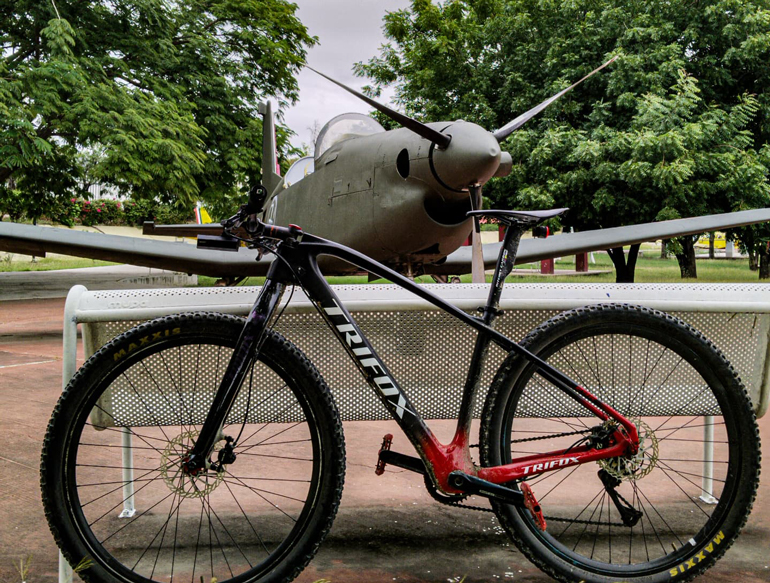
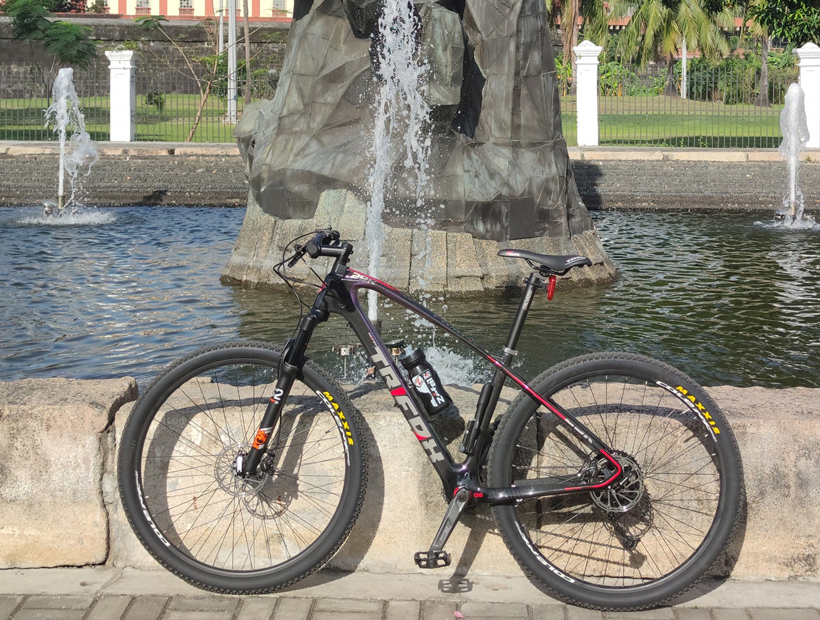
If you're looking to elevate your mountain biking game, upgrading to a carbon hardtail frame is a game-changer. Lightweight, responsive, and built to tackle rugged trails, a carbon frame like the Trifox Carbon MTB Hardtail Frame MFM200 offers unmatched performance for riders seeking speed, control, and durability. Here’s why this upgrade should be at the top of your list.
1. Lightweight Performance
Carbon fiber's biggest advantage is its strength-to-weight ratio. A carbon hardtail frame shaves off pounds compared to aluminum or steel, making climbs feel effortless and acceleration snappier. The MFM200’s monocoque construction ensures stiffness where it matters—like the bottom bracket and head tube—while maintaining vertical compliance to absorb trail chatter. This translates to faster lap times and less fatigue on long rides.
2. Precision Handling
Hardtails thrive on agility, and carbon takes this to the next level. The MFM200’s geometry balances stability and maneuverability, with a slack head angle for confident descents and a short chainstay for tight cornering. Carbon’s natural vibration-damping properties also reduce hand and arm fatigue, letting you stay in control on technical terrain.
3. Durability That Lasts
Don't let carbon's lightweight fool you—it's tough. Modern carbon frames, like Trifox’s MFM200, are engineered to withstand impacts and resist corrosion. The high-modulus carbon layup ensures resilience against rock strikes and rough trails, offering longevity that rivals metal frames. Plus, it’s backed by Trifox’s quality craftsmanship, so you're investing in reliability.
4. Customization Freedom
Swapping to a new frame lets you build your dream bike. The MFM200 supports modern standards: internal cable routing for a clean look, a tapered head tube for precise steering, and thru-axle dropouts for wheel stiffness. Pair it with your favorite components—whether 29er or 27.5” wheels, 1x or 2x drivetrains—and tailor your setup to your riding style.
5. Future-Proof Value
While carbon frames have a higher upfront cost, they're a smart long-term investment. The MFM200's versatility and timeless design mean you won't need another upgrade soon. Plus, shedding weight at the frame (the bike's core) delivers more noticeable gains than swapping pricier components.
Ready to transform your ride? The Trifox MFM200 isn't just a frame—it's the foundation for a faster, smoother, and more thrilling mountain biking experience. Visit TrifoxBike to explore how this carbon hardtail can unlock your trail potential.
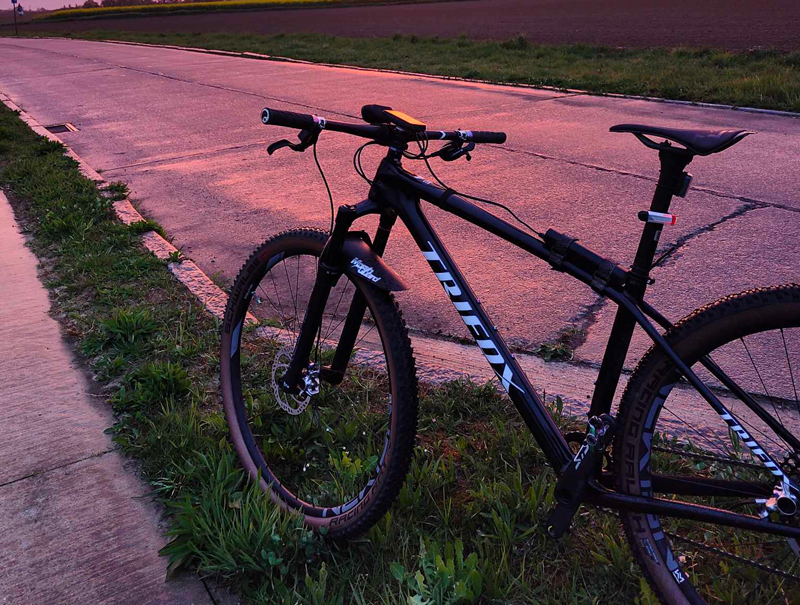
When shopping for a mountain bike, weight plays a crucial role in performance. A lighter bike can climb faster, accelerate quicker, and feel more nimble on technical trails. But what exactly qualifies as “lightweight” in the world of mountain biking? Let's break it down.
Mountain bikes vary in weight based on their design. A typical hardtail (no rear suspension) ranges from 28–32 pounds (12.7–14.5 kg), while full-suspension models often weigh 30–35 pounds (13.6–15.9 kg). For a bike to be considered lightweight, aim for:
- Hardtail: Under 25 pounds (11.3 kg)
- Full-suspension: Under 28 pounds (12.7 kg)
Achieving these numbers requires premium materials and components. For example, carbon fiber frames, like those used in the Trifox SDY20 Mountain Bike, shave significant weight while maintaining strength. High-end drivetrains (e.g., Shimano XT), tubeless wheels, and minimalist cockpits also contribute to a lighter build.
Factors Affecting Weight
1. Frame Material: Carbon fiber is the gold standard for lightweight durability. Aluminum frames are heavier but more affordable.
2. Components: Wheelsets, suspension forks, and drivetrains impact weight. Look for carbon rims and air-sprung shocks.
3. Accessories: Dropper posts and cushioned grips add grams—opt for pared-down versions if weight is a priority.
The Trifox SDY20: A Lightweight Contender
The Trifox SDY20 exemplifies lightweight design. Its full-carbon frame weighs just 1.2 kg (2.65 lbs), paired with a carbon seatpost and handlebar. Combined with a 1x12 drivetrain and tubeless-ready wheels, the SDY20 hits the scales at roughly 24 pounds (10.9 kg), making it a top choice for riders seeking agility without sacrificing trail capability.
Is Lighter Always Better?
Not necessarily. Ultra-light bikes can compromise durability or comfort. The key is balancing weight with your riding style. Cross-country racers might prioritize shedding grams, while enduro riders could favor robustness. The SDY20 strikes this balance, offering a responsive ride for technical climbs and descents.
A lightweight mountain bike enhances performance but requires strategic investments. If you’re chasing speed and efficiency, prioritize carbon frames and high-end components. Check out the Trifox SDY20 for a blend of featherweight design and trail-ready durability—your next uphill PR might depend on it.
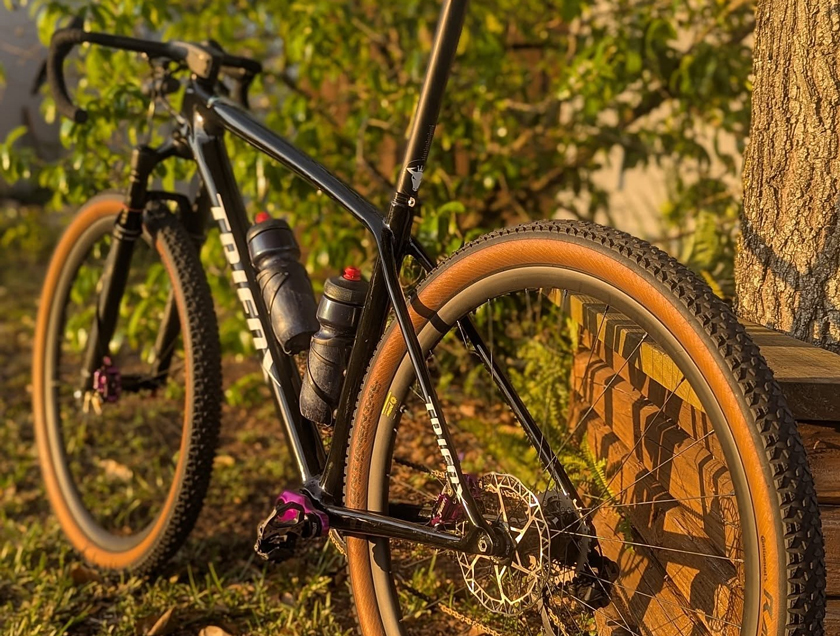
When every gram counts on rugged trails, the quest for the lightest mountain bike frame becomes critical. Lighter frames improve acceleration, climbing, and agility—but not all materials are created equal.
The Contenders: Frame Materials Compared
1. Carbon Fiber
- Weight: The undisputed champion, carbon frames weigh 20–30% less than aluminum.
- Pros: High strength-to-weight ratio, vibration damping, customizable stiffness.
- Cons: Expensive; requires precision engineering to avoid damage.
- Example: Trifoxbike’s Carbon Frames use high-modulus carbon for sub-1,000g builds without sacrificing trail durability.
2. Aluminum
- Weight: Heavier than carbon but lighter than steel.
- Pros: Affordable, stiff, and corrosion-resistant.
- Cons: Harsher ride; less efficient on long climbs.
3. Titanium
- Weight: Comparable to high-end aluminum.
- Pros: Durable, corrosion-proof, and compliant ride.
- Cons: Costly; limited design flexibility.
4. Steel
- Weight: Heaviest option, but improving with modern alloys.
- Pros: Smooth ride quality, repairable, timeless aesthetic.
- Cons: Prone to rust; impractical for competitive racing.
Why Carbon Fiber Dominates
Carbon fiber's layered construction allows engineers to fine-tune strength and flex zones, creating frames that are both featherlight and tough. Advanced brands like Trifoxbike optimize layup techniques to balance weight savings with trail-ready resilience—ideal for XC racers or trail riders seeking efficiency.
But Is Lightest Always Best?
While carbon excels in weight and performance, consider these factors:
- Budget: Carbon frames cost 2–3x more than aluminum.
- Durability: Modern carbon resists impacts, but crashes can still cause costly damage.
- Ride Quality: Aluminum and steel offer compliance for endurance riders.
Why Choose Trifoxbike’s Carbon Frames?
Trifoxbike's Carbon Bike Frames exemplify cutting-edge design. Their frames prioritize weight reduction (as low as 900g) while maintaining stiffness for precise handling. Features like internal cable routing and compatibility with modern components make them a versatile upgrade for weight-conscious riders.
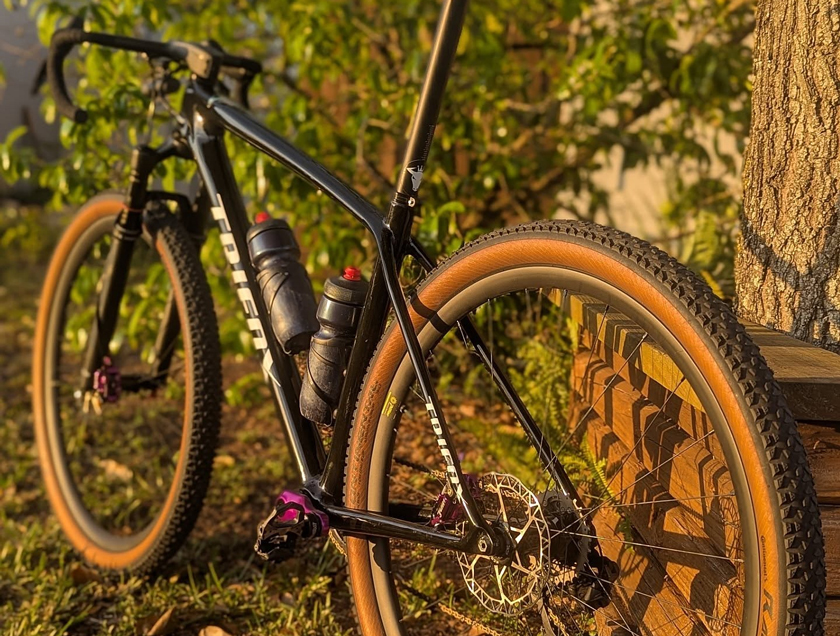
Carbon fiber is the lightest MTB frame material, offering unmatched performance for competitive and aggressive riders. However, aluminum and titanium remain viable for budget-focused or durability-first builds. If shedding grams is your goal, invest in a quality carbon frame like Trifoxbike’s—just pair it with smart component choices to maximize your trail potential.
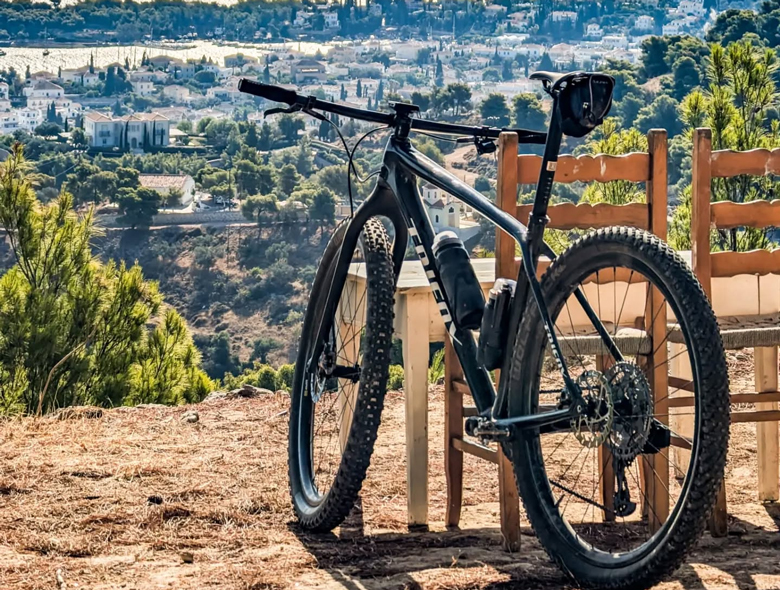
Mountain biking thrives on precision, and power meters have revolutionized training. But on rugged trails, every gram counts. The lightest power meters blend featherweight design with MTB-tough durability. Let's explore top options and how they pair with high-performance components
Why Weight Matters
Reducing rotational mass on wheels, cranks, or pedals improves acceleration and agility. A lightweight power meter minimizes drag, while a carbon frame like Trifoxbike’s Boost SDY20 (1,200g) amplifies efficiency. Together, they create a responsive ride ideal for technical climbs and sprints.
Top Lightweight Power Meters
1. Sigeyi AXO Chainring Meter
- Weight: +12g (vs. standard chainring).
- Best For: Minimalists. Integrates seamlessly with most cranks.
- Pair With: Trifoxbike’s SDY20 hardtail for a sub-10kg race-ready build.
2. 4iiii Precision 3.0+
- Weight: 15g (crank-arm).
- Budget Pick: Affordable accuracy (±1.5%) for Shimano users.
3. Quarq DZero MTB
- Weight: 135g (spider-based).
- Pro Choice: Dual-sided data and SRAM compatibility.
4. Stages Carbon MTB
- Weight: 140g.
- Durability: Carbon construction for trail abuse.
Why Frame Choice Matters
A lightweight frame like Trifoxbike’s SDY20 Boost hardtail enhances power transfer, letting you capitalize on precise wattage data. Its carbon layup dampens trail chatter, while Boost spacing ensures stiffness for explosive efforts.
Final Tips
- Prioritize compatibility: Match power meters to your drivetrain and frame.
- Balance weight and toughness: Trail demands reliability.
- Upgrade smart: Pair a Sigeyi AXO or Stages meter with Trifoxbike’s SDY20 frame for a race-winning combo.
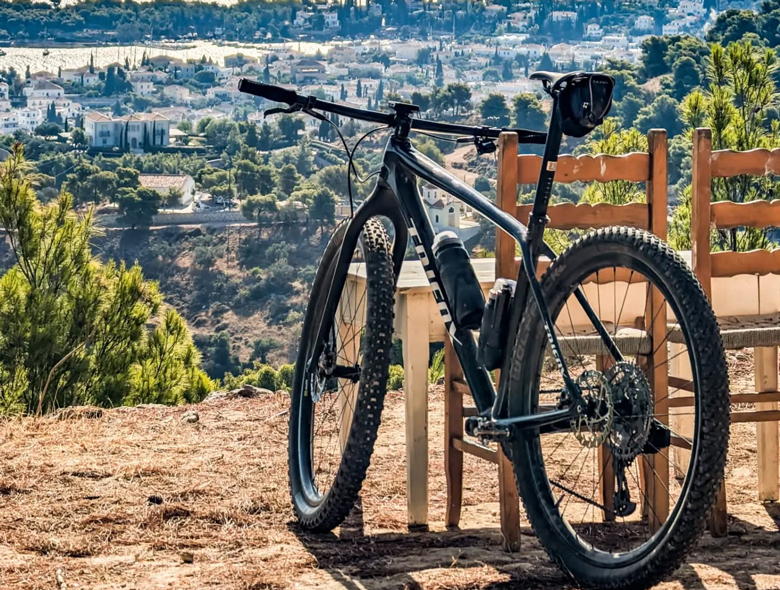
Lightweight power meters and smart component choices let you train harder, climb faster, and ride longer—without sacrificing grams or performance.
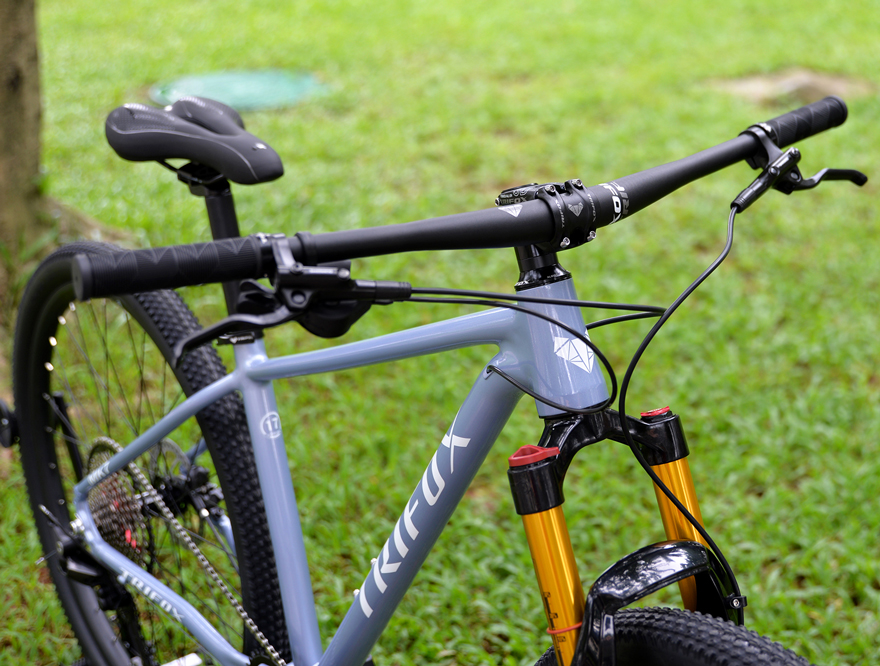
When it comes to mountain biking, finding the right balance between cost and performance can feel like a never-ending quest. Enter the 29er alloy hardtail frame—a design that promises the ruggedness needed for aggressive trails without breaking the bank. But does it live up to the hype?
THE CASE FOR ALLOY: AFFORDABILITY MEETS PERFORMANCE
Carbon fiber often steals the spotlight for its featherweight appeal, but alloy frames like the MK7 offer a compelling alternative. Aluminum provides a robust foundation at a fraction of the cost, making it ideal for riders who prioritize value.
The MK7's ultralight construction shaves weight without compromising strength, bridging the gap between budget-friendly and high-performance. For beginners or seasoned riders watching their wallets, alloy delivers resilience where carbon might falter—think rock strikes, crashes, or rough trail abuse.
TRAIL-READY TOUGHNESS: BUILT TO LAST
Durability is where alloy truly shines. The MK7’s hydroformed tubing reinforces critical stress points, ensuring the frame withstands repeated punishment from roots, drops, and technical climbs. Pair this with the modern 148mm Boost rear spacing, which increases wheel stiffness and compatibility with wider hubs, and you’ve got a setup that combats flex during hard cornering and accelerates efficiently. This isn’t a frame that coddles; it’s built to push limits, making it a reliable partner for everything from flowy singletrack to gnarly descents.
29ER WHEELS: THE TRAIL-SMOOTHING ADVANTAGE
The 29-inch wheels paired with this hardtail design are a game-changer. Their larger diameter rolls over obstacles with ease, maintaining momentum on climbs and reducing fatigue over long rides. While hardtails lack rear suspension, the MK7’s rigid rear triangle ensures direct power transfer, letting you tackle climbs with urgency. The 29er’s stability also complements the frame’s durability, creating a bike that feels planted and predictable when the trail gets rowdy.
HARDTAIL SIMPLICITY: LESS MAINTENANCE, MORE RIDING
Hardtails eliminate the complexity (and cost) of rear suspension, offering a lighter, more responsive ride. The MK7 leans into this ethos, with a clean design that’s easier to maintain and repair. Fewer moving parts mean fewer headaches—perfect for riders who want to spend less time tuning and more time riding.
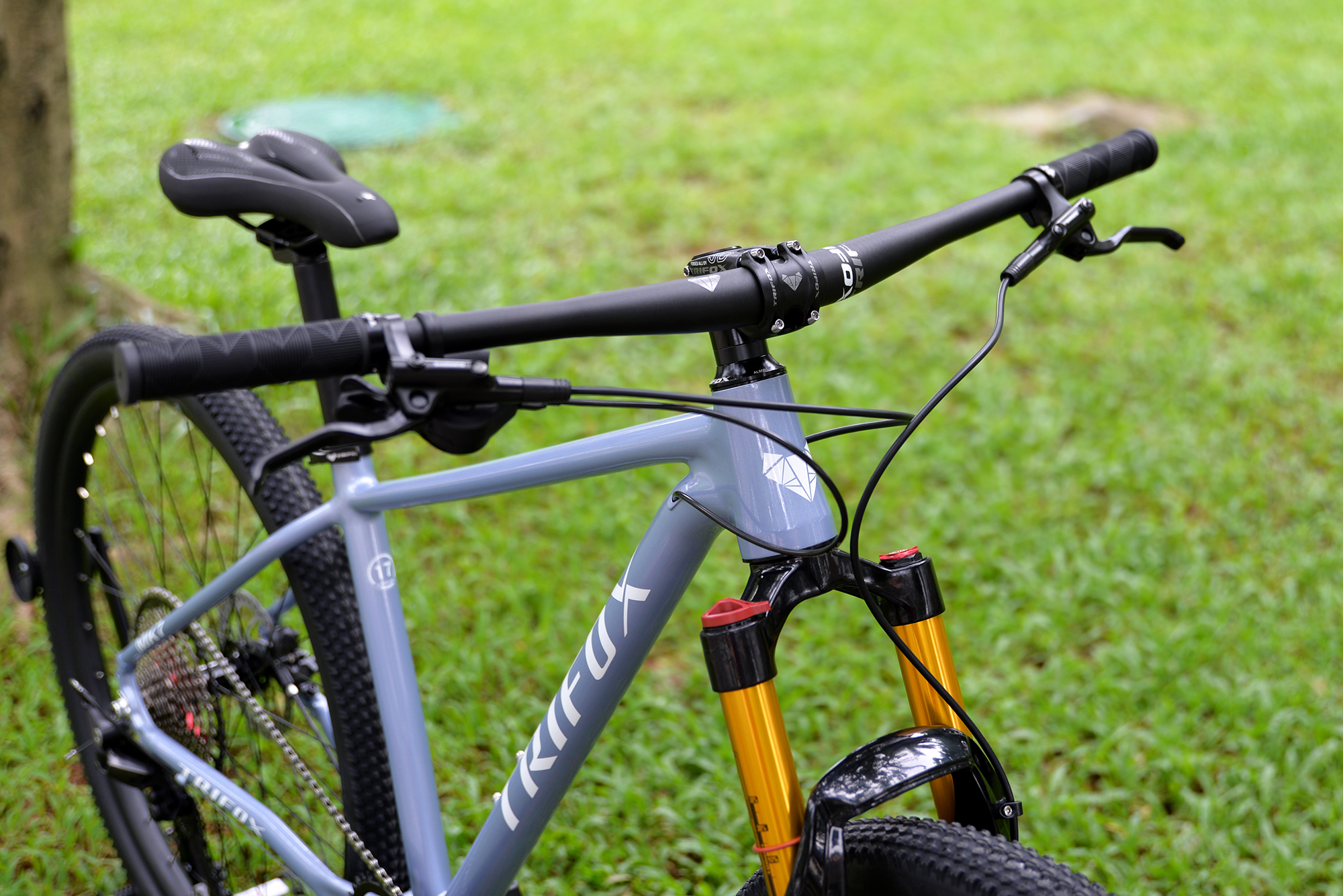
VERDICT: THE BEST OF BOTH WORLDS?
So, is a 29er alloy hardtail frame the perfect blend of affordability and durability? For most riders, the answer leans yes. The Trifox MK7 exemplifies this balance, offering a lightweight yet tough platform that thrives on diverse terrain. It's a smart choice for those seeking a capable, low-maintenance bike that won't empty their wallet.
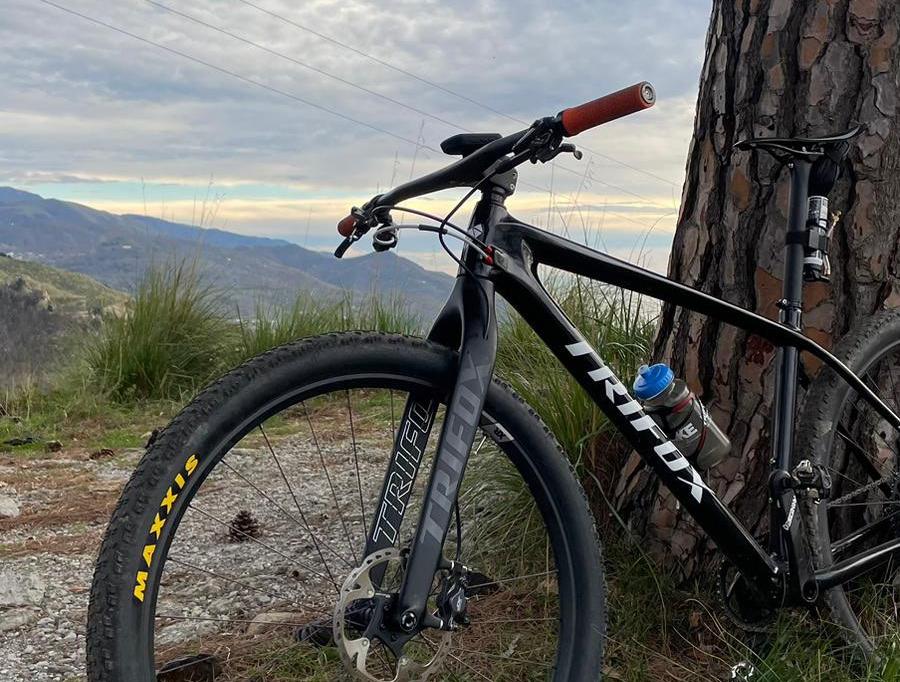
In the world of mountain biking, agility reigns supreme. Whether carving through singletrack or tackling technical descents, responsiveness and control define your ride.
The secret to unlocking next-level off-road performance lies in two innovations: an ultralight carbon MTB frame and a Boost fork. Together, they create a synergy that elevates speed, precision, and confidence on any trail.
Ultralight Carbon Frame: The Backbone of Speed
Carbon fiber's magic lies in its strength-to-weight ratio. Trifox’s SDY20 frame exemplifies this, shedding grams without sacrificing durability. A lighter bike accelerates faster, climbs easier, and flicks through tight turns effortlessly. Carbon’s natural vibration damping also enhances comfort, reducing fatigue on long rides. But the real win is stiffness—optimal torsional rigidity ensures every watt of power translates to forward motion, while compliant seatstays absorb trail chatter for better traction.
Boost Fork: Precision Meets Stability
The Boost standard (110mm front axle spacing) isn’t just a buzzword—it’s a game-changer. Wider hub spacing increases wheel stiffness, preventing flex during hard cornering or rock strikes. This means sharper steering response and unwavering control in loose terrain. Paired with a lightweight carbon frame, the Boost fork ensures your front wheel tracks true, boosting confidence on steep descents and technical climbs.
The Dynamic Duo
Combine the SDY20's featherlight frame with a Boost fork, and agility reaches new heights. The frame's nimble character complements the fork’s stability, creating a bike that’s both quick and composed. Tight switchbacks? Effortless. Rocky descents? Unshakable. This pairing reduces rider fatigue, letting you push harder for longer.
For riders seeking an edge, Trifox’s SDY20 merges cutting-edge materials and smart engineering. It's not just about weight or stiffness—it’s how these elements harmonize to redefine off-road agility.
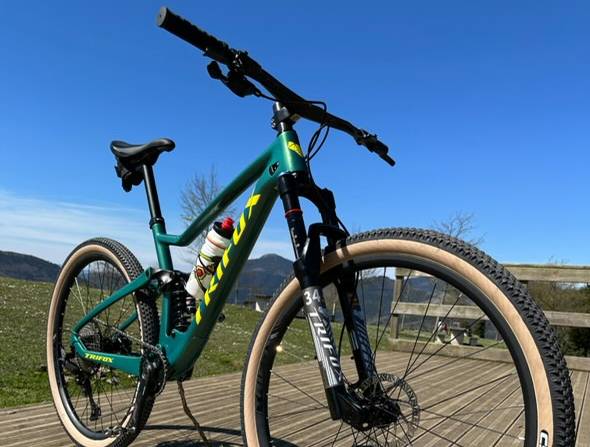
Mountain biking thrives on adrenaline, but as trails get gnarlier, your hardtail might struggle. So, when is it time to switch to a full suspension bike?
1. Your Terrain Demands It
If you’re tackling rocky descents, root-covered paths, or technical drops, a full suspension bike absorbs shocks better, keeping you in control. TrifoxBike’s designs, like the Trifox Full Suspension MTB, feature optimized rear travel to smooth out rough trails, reducing fatigue and improving traction.
2. Your Riding Style Gets Aggressive
Downhill shredders, jump enthusiasts, and enduro racers benefit from dual suspension. The added stability at high speeds and landings protects your body and bike. TrifoxBike’s frames balance lightweight durability with responsive suspension, ideal for pushing limits.
3. You Ride Frequently
Regular riders logging long hours need comfort. Full suspension reduces joint strain, letting you ride longer. TrifoxBike integrates ergonomic designs without sacrificing efficiency, making their bikes a smart choice for daily adventurers.
4. Your Skills Outgrow Your Bike
Advanced riders tackling steeper lines or faster corners need bikes that match their progression. Full suspension offers confidence to tackle technical features. TrifoxBike’s models support skill growth with precision handling and adjustable setups.
5. Budget Allows for Investment
While pricier than hardtails, TrifoxBike delivers high-value builds with premium components like air shocks and durable pivots. If your riding justifies the cost, it’s a worthy upgrade.
6. You Prioritize Traction
Wet, loose, or uneven terrain demands grip. Full suspension maintains tire contact, enhancing control. Pair this with TrifoxBike’s grippy tire compatibility, and you’ve got a trail-eating machine.
7. Maintenance Doesn’t Intimidate You
Full suspension requires more upkeep, but TrifoxBike’s reliable seals and accessible pivot points simplify care, ensuring longevity.
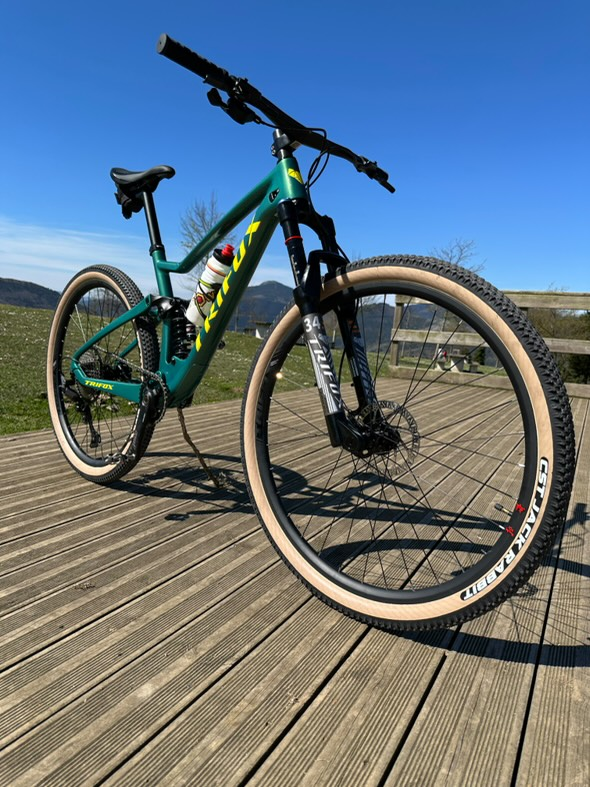
Upgrade if your trails, style, or ambition demand more. TrifoxBike’s full suspension range blends performance and value, ready to elevate your ride.
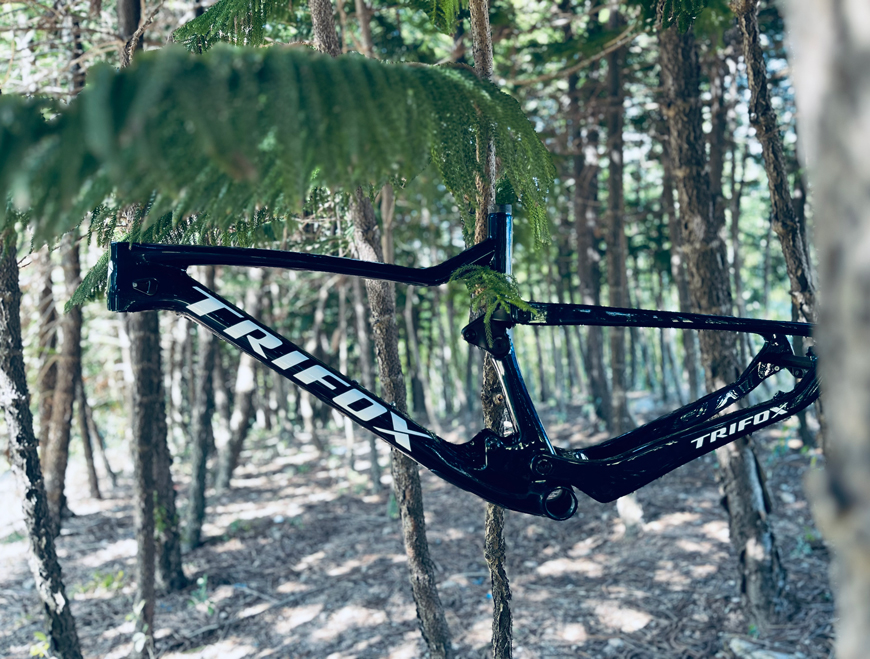
The age-old debate between hardtail (front suspension only) and full-suspension mountain bikes boils down to one question: What kind of rider are you? Let’s dissect the pros, cons, and ideal use cases for both setups to help you decide—and explore how brands like Trifox cater to diverse preferences.
Hardtail (Without Rear Suspension)
Pros:
- Lightweight: Fewer parts mean easier climbing and faster acceleration.
- Lower Cost: Affordable to buy and maintain (no rear shock or pivot bearings).
- Efficiency: Direct power transfer makes pedaling feel responsive, ideal for smooth trails or XC racing.
- Simplicity: Less maintenance and easier DIY repairs.
Cons:
- Rough Ride: Rear impacts are absorbed solely by your legs, leading to fatigue on technical terrain.
- Traction Limits: Less control on loose or rocky descents.
Full-Suspension
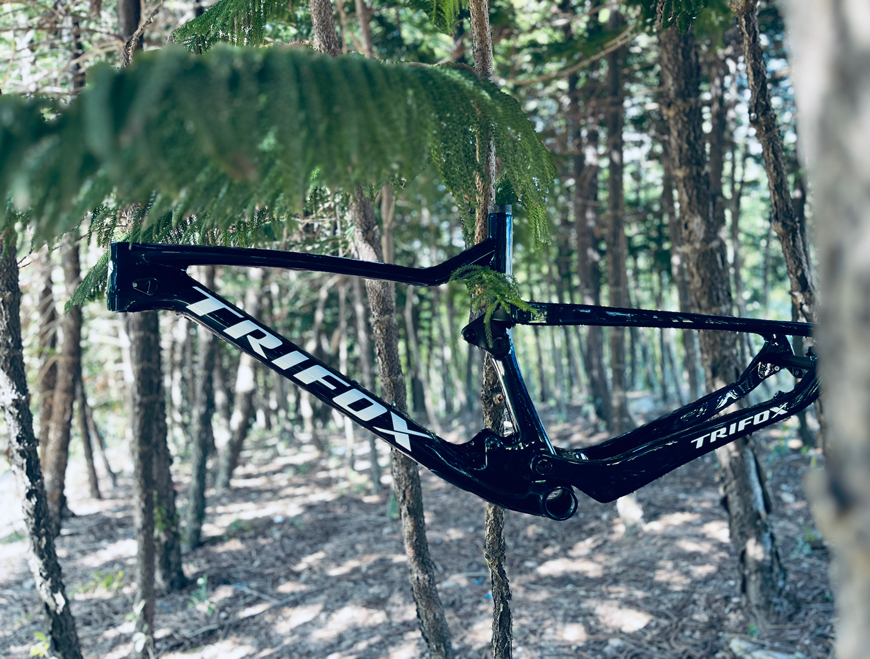
Pros:
- Comfort & Control: Rear shocks smooth out bumps, reducing fatigue and improving grip on chunky trails.
- Versatility: Confidently tackle downhill, enduro, or all-day adventures.
- Speed: Maintain momentum through rough sections.
Cons:
- Weight & Cost: Heavier frame and higher upfront/maintenance costs.
- Complexity: More moving parts mean more potential for mechanical issues.
Who Should Ride What?
- Choose a Hardtail If: You prioritize budget-friendly efficiency, ride smoother trails, or love climbing. Models like Trifox’s hardtails excel here, blending lightweight frames with trail-ready geometry.
- Choose Full-Suspension If: You crave technical descents, endurance rides, or park laps. Trifox’s full-suspension bikes offer balanced travel and durability for aggressive terrain.
Key Considerations
1. Terrain: Rocks, roots, and drops? Full-suspension shines. Pavement or flow trails? Save weight with a hardtail.
2. Budget: Hardtails cost less upfront and long-term.
3. Skill Level: Beginners may appreciate a hardtail’s simplicity; advanced riders often leverage full-squish capabilities.
There's no “better” option—only what's better for you. Hardtails reward efficiency and simplicity, while full-suspension bikes unlock technical prowess and comfort. Test both if possible, and consider Trifox’s range to match your riding style. Whether you're chasing KOMs or sending drops, the right suspension setup ensures every ride feels like freedom.
























































